A lush, green lawn adds beauty and value to any property. However, keeping your lawn looking its best all year round can be a challenge. With a little bit of care and attention, though, you can have a healthy lawn that you'll be proud to show off. Here are five tips for maintaining a healthy lawn all year round.
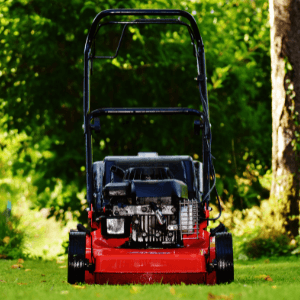
The height at which you mow your lawn can have a big impact on its health. When the grass is cut too short, it can become stressed and susceptible to disease. On the other hand, if it's cut too tall, it can become too shady for the lower blades to receive enough sunlight. The ideal height for most lawns is about 3 inches.
It's important to give your lawn a deep watering about once a week, rather than a light watering every day. This encourages the roots to grow deeper, which makes the lawn more drought-tolerant. Additionally, watering in the early morning or late evening can help reduce evaporation and ensure that the water reaches the roots.
Fertilizing your lawn at the right time can make a big difference in its health. Most lawns benefit from a slow-release fertilizer applied in the fall, when the grass is still actively growing. However, it's also important to note that over-fertilizing can lead to weak, shallow roots and an excess of thatch.
Pests and diseases can quickly take over a lawn if left untreated. Be on the lookout for signs of damage and address them promptly. This can be done through the use of pesticides or by encouraging beneficial insects to thrive in your lawn. Additionally, it's important to remove any dead or diseased grass from your lawn to prevent the spread of the problem.

Aeration is the process of creating small holes in the soil to allow air, water, and nutrients to reach the roots of the grass. This can be done with a manual aerator or a powered aerator and should be done at least once a year.
A healthy lawn is a beautiful thing, but it does take some effort to maintain. By following these tips, you'll be well on your way to having a lawn that you'll be proud to show off. And remember, consistency is key, so be sure to make lawn care a regular part of your routine.
A well-maintained lawn is a key element in creating an inviting outdoor space. With a little bit of care and attention, you can have a lawn that looks great all year round and adds beauty and value to your property. Happy gardening!
Summer in Ontario can be challenging for gardeners because it's hot and dry, and there are more pests around. But if you water and take care of your garden the right way, it can do well all summer long. This article will share tips and tricks for keeping your Ontario garden healthy and beautiful all summer.
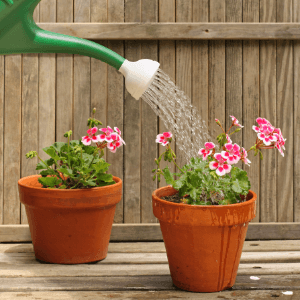
One of the most important aspects of summer garden maintenance is ensuring your plants receive the right amount of water. Here are some tips to keep in mind:
When you water too shallowly, you only soak the top layer of soil. This causes the roots to grow outward, which makes plants more susceptible to drought stress. Deep watering encourages plants to develop deep roots that can reach down for moisture and nutrients in the soil.
Watering when the sun is less intense can reduce water loss from evaporation. This can help your plants make the most of the water they receive and avoid heat stress.
With these systems, you can send water straight to the roots of plants so that it doesn't evaporate. They also help to reduce the risk of fungal diseases, as the leaves stay dry.
During the summer, rainfall can be scarce, and water can be expensive to purchase. Installing a rain barrel or collection system helps to harvest and store water you can use to water your garden.
In addition to proper watering, your garden will also benefit from regular maintenance during the summer months. Here are some tips to consider:
Deadheading, or the removal of spent blooms, is an essential summer garden maintenance task. It encourages plants to produce more flowers and extends the blooming season.
Weeds compete with plants for water and nutrients and can quickly take over a garden bed. Regular weeding helps keep the garden neat and well-maintained, preventing the spread of weeds.
Mulching helps retain soil moisture and suppress weed growth. It also keeps the soil cool, benefiting many plants during the hot summer.

Slow-release fertilizers provide nutrients to plants over an extended period. This can help to maintain healthy growth throughout the growing season.
Pests and diseases can quickly spread through a garden and damage or kill plants.
Regular inspection helps detect and treat any problems before they become severe. Prompt action can save your garden from significant issues later in the season.
Conclusion
Following these watering and maintenance tips, your Ontario garden can thrive all summer. Keep an eye on your plants and be ready to change how you water and care for them based on the weather and other things.
Looking for professional help with your summer garden maintenance? Contact Landscaping St Catharines for expert advice and services.
Using gardening as a pastime is a great way to find relaxation and satisfaction in life. However, creating a garden that meets your needs and desires can take time and effort if you have a small outdoor space. But don’t worry; small gardens can be just as beautiful and functional as larger ones, and there are plenty of creative garden design ideas that you can use to transform your outdoor space.
This blog post will share 10 creative garden design ideas for small spaces that inspire you to create a beautiful and functional garden.
There is a design idea for every style and taste, from vertical gardens to cottage gardens. So, whether you are new to gardening or an experienced gardener, you are sure to find inspiration for your next project.
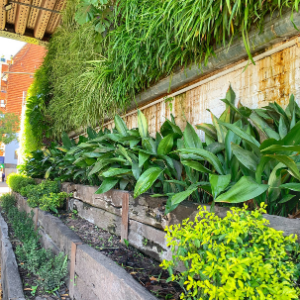
Vertical gardening is a space-saving solution for small gardens. You can grow herbs, flowers, and succulents on wall-mounted shelves or hanging baskets. Vertical gardening also adds dimension and interest to a small garden.
Growing plants in containers is a fantastic option to maximize space in a small yard. Choose containers in different shapes and sizes to add interest, and mix and match plants for a vibrant display. Container gardening also makes it easy to move plants around if you need to rearrange your garden.
Raised-bed gardening is an excellent solution for small gardens because it allows you to maximize your growing space. Raised beds can be made from various materials, including wood, stone, or concrete. They can be filled with soil or compost and planted with your favourite vegetables, herbs, or flowers.
A fairy garden is a whimsical and enchanting addition to a small garden. Use miniature plants, fairy garden accessories, and tiny furniture to create a magical world in your backyard. Fairy gardens are also a fun way to encourage kids to get involved in gardening.
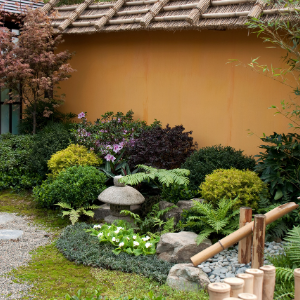
A Japanese garden is a serene and peaceful addition to a small garden. Use rocks, sand, and water to create a soothing environment. Japanese gardens are also a great place to grow traditional Japanese plants, such as bonsai trees, cherry blossom trees, and bamboo.
An herb garden is a practical and fragrant addition to a small garden. Use a variety of herbs to create an aromatic and flavorful garden. Herbs can be used in cooking, as natural remedies, or just for their beautiful fragrances.
A rock garden is a unique and beautiful addition to a small garden. Use rocks, stones, and gravel to create a natural-looking environment. Rock gardens are also great for growing succulents and other low-maintenance plants.
A butterfly garden is a colourful and attractive addition to a small garden. Use flowers with a lot of nectar, like lupines, zinnias, and butterfly bushes, to bring butterflies to your garden. A butterfly garden is also a great place to enjoy the beauty of these graceful insects.
A green wall is a stunning and eco-friendly addition to a small garden. Use a variety of plants, including ferns, succulents, and creepers, to create a wall of greenery. Green walls are also a great way to reduce noise and improve air quality.
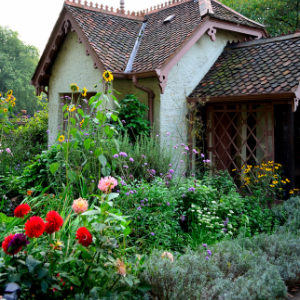
A cottage garden is a charming and romantic addition to a small garden. Use a variety of plants, including roses, foxgloves, and hollyhocks, to create a colourful and fragrant garden. Cottage gardens are also a great place to enjoy a relaxing cup of tea or a quiet stroll.
In conclusion, creating a beautiful garden in a small space is a challenge, but it is also an exciting opportunity to get creative and make the most of your outdoor space. Whether you create a vertical, butterfly, or Japanese garden, the key is choosing plants and design elements that work well together and make the most of your space.
With some planning, creativity, and hard work, you can turn your small outdoor space into a beautiful and functional garden that you can enjoy for years. So get inspired, roll up your sleeves, and start creating your dream garden today!
Spring is a crucial season for lawn care in Ontario, as it marks the end of the long winter and the beginning of the growing season. Ensuring your lawn is healthy and lush by getting it back in shape is essential. This article will provide tips and tricks for spring lawn care to help you achieve a vibrant and lush lawn in Ontario.
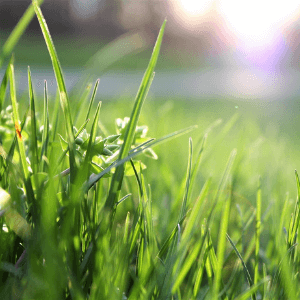
Spring is a crucial time for lawn care as it sets the foundation for healthy growth during the rest of the growing season. By caring for your lawn in the spring, you can ensure it gets the nutrients and growing conditions it needs to be healthy.
One of the first things you should do in the spring is to rake your lawn. Raking removes any debris and dead grass that has accumulated over the winter. It also helps to loosen the soil and promote better airflow to your lawn's roots.
Aerating your lawn is an essential step in spring lawn care. Aeration helps to break up compacted soil, allowing for better nutrient and water absorption. You can rent an aerator or hire a professional lawn care service to do the job for you.
Topdressing your lawn with compost is another vital spring lawn care task. Compost helps to improve soil quality and add nutrients to your yard. You can apply a thin layer of compost with a spreader or by hand.
Spring is a great time to seed your lawn, fill bare spots, and thicken grass. You can use a seed spreader or apply the seed by hand. Be sure to water your lawn regularly after seeding to promote germination.
Fertilizing your lawn in the spring is essential for optimal growth. Choose a fertilizer that's high in nitrogen to promote green growth. Be sure to follow the instructions on the label carefully.
Proper watering of your lawn is critical for healthy growth. It's better to water deeply and infrequently than shallowly and often. Aim for about one inch of water per week through rainfall or irrigation.
Finally, regular mowing is essential for a healthy lawn. Keep your mower blade sharp and adjust the height according to the season. In the spring, you should mow your property to a height of about 2.5 to 3 inches.
Conclusion
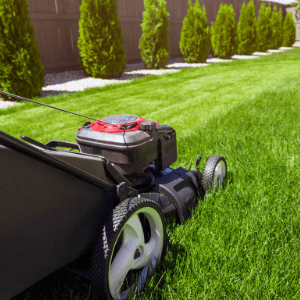
Spring is a very important time to take care of your lawn in Ontario, and you need to do it right for it to grow well all year. Maintaining a healthy, flourishing lawn includes several duties, including raking, aerating, topdressing with compost, seeding, fertilizing, adequately watering, and regular mowing.
Using these spring lawn care tips and tricks, ensure your lawn has the nutrients and growing conditions it needs to do well. Remember that a healthy lawn not only makes your property look better, but it also helps the environment in many ways.
The spring is an important time for lawn care in Ontario. Following these spring lawn care tips can help your lawn get off to a healthy start and thrive throughout the growing season. Contact Landscaping St Catharines for top-notch services if you need professional assistance with your lawn care needs.
Summer in Ontario can be a challenging time for landscaping. The heat and humidity can take a toll on even the most robust plants, making it difficult to maintain a healthy and thriving landscape.
But with some planning and knowledge, you can make a beautiful summer landscape that does well in Ontario's hot and humid climate.

Choosing the right plants is the key to a thriving summer landscape in Ontario. Native plants are an excellent choice, as they have evolved to thrive in local conditions. Plants like coneflower, black-eyed Susan, and butterfly weed are perfect for a summer garden in Ontario.
Drought-tolerant plants like sedums, coreopsis, and lavender are also excellent choices.
In the summer, your plants need more water than usual to survive. The best time to water is early morning or late evening when the sun is not at its peak.
Avoid watering during the hottest part of the day, as the water will evaporate quickly, and your plants will not receive the necessary moisture.
A soaker hose or drip irrigation system can also help save water while giving the roots of plants a deep drink.
Mulch is an essential component of a thriving summer landscape in Ontario. A layer of mulch can help retain moisture, suppress weeds, and regulate soil temperatures. Organic materials like compost, shredded leaves, or grass clippings are excellent choices.
Additionally, amending your soil with organic matter can help improve the soil's structure and nutrient content, which is essential for healthy plant growth.
You must plan for shade and sun to make a comfortable and valuable outdoor living space. You could plant tall trees or build a pergola to shade seating areas or patios.
Also, consider using plants with big leaves or textures to make areas with a lot of sun cooler.

Your Ontario summer landscape requires routine maintenance and repairs to remain attractive and healthy. Pruning, deadheading, and fertilizing are crucial tasks that will help your plants thrive.
Removing spent blooms and dead or diseased branches will help prevent pests and diseases from spreading.
Conclusion:
You can make a summer landscape well in Ontario's heat and humidity with the right choice of plants, watering, mulching, soil amendments, and design. With these easy steps, you can make a beautiful, long-lasting landscape that will give you pleasure and beauty all summer.
At Landscaping St Catharines, we have years of experience designing and maintaining summer landscapes in Ontario. Our team of experts can help you create a beautiful and sustainable outdoor living space that thrives in the hot and humid climate. Contact us today for a consultation!
Spring is a season of renewal and growth, and it's the perfect time to get your lawn and garden ready for the warmer weather. However, preparing your outdoor space for spring can be challenging, especially if you need more tools and expertise. This is when professional spring landscaping services can help. Here's how:

Cleaning the winter debris is the first step in preparing your lawn and garden for spring. Professional spring cleaning services can save you time and effort by removing dead leaves and branches, clearing yard debris, and preparing flower beds for planting.
It ensures your outdoor space is ready for warmer weather and prevents potential dangers.
After the clean-up, your lawn needs some attention. Spring is the perfect time to fertilize and aerate your property, which will help it grow lush and green.
Professional landscaping services and regular lawn maintenance tasks like mowing and edging can handle these tasks to keep your lawn looking its best throughout the season.
Spring is the perfect time to add new life to your garden with fresh flowers and shrubs. Professional landscaping services can help you choose the right plants for your space and take care of planting and maintenance.
These include adding new mulch to garden beds, pruning shrubs, and ensuring plants get the proper water and nutrients to thrive.
Professional landscaping services can do more than care for your lawn and garden. They can also help you change your outdoor space by adding hardscaping and outdoor living features.
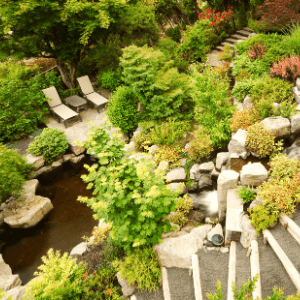
What's more it includes putting in new patios, walkways, and retaining walls to create outdoor living areas that work well.
You can also add outdoor lighting and sprinklers to make your space more beautiful and valuable. These additions will improve the look of your outdoor space and increase your home's value.
Conclusion:
In conclusion, hiring spring landscaping services in Ontario can save you time and effort while ensuring your outdoor space is ready for warmer weather.
With services ranging from spring clean-up to lawn care and maintenance, garden preparation and planting, hardscaping, and outdoor living spaces, you can create the perfect outdoor area you have always dreamed of.
Here are some frequently asked questions about spring landscaping services:
Professional landscapers have the tools and knowledge to prepare your lawn and garden for the season. They can help you save time and effort and ensure that your outdoor space is adequately cleaned and ready for the warmer weather.
At the very least, once a year in the spring is the best time to fertilize and aerate your grass. Aeration breaks up hardened soil and lets water and nutrients reach deeper into the roots. Fertilizer gives your lawn the nutrients it needs to grow healthy and green.
The ideal plants for your spring garden will vary according to climate, light levels, and personal taste.
Professional landscaping services can help you choose the right plants for your space and ensure they are properly planted and cared for.
Hardscaping features like patios, walkways, and retaining walls can make your outdoor space more beautiful and valuable. Professional landscaping services can help you design and install hardscaping features that fit your needs and tastes.
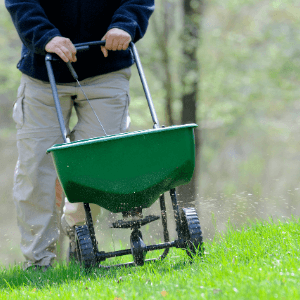
The cost of professional landscaping services in the spring depends on a number of things, such as the size of your property, the types of services you want, and the level of expertise and experience of the landscaping company.
It is best to request a quote from several landscaping companies to understand the cost and services available in your area.
Landscaping St Catharines offers various seasonal services to transform your outdoor space, including spring clean-up, lawn care and maintenance, garden preparation and planting, hardscaping, and outdoor living spaces.
Contact us today to schedule your spring landscaping services and transform your outdoor space.
Creating a garden can be a fantastic way to add beauty and value to your home, but maintaining one can be daunting. With busy schedules and the need to conserve water, many homeowners are looking for ways to create a garden that requires minimal maintenance.
That's where a low-maintenance garden comes in. Low-maintenance gardens are beautiful and functional, requiring little watering, fertilizing, and pruning.
This article will walk you through the steps of creating a low-maintenance garden, from planning to maintenance.

The first step in creating a low-maintenance garden is to assess the site. This includes analyzing the soil, determining sun and shade patterns, and designing the layout. When it comes to soil, it's essential to understand its composition and fertility.
A soil test can help determine pH, nutrient content, and drainage. Knowing the soil's characteristics will help you choose the right plants. Native plants and drought-tolerant plants are great options for low-maintenance gardens. They are adapted to the local climate and require less water and care.
They must consider their water needs, growth habits, and bloom time when choosing the right plants. Drought-tolerant plants and native plants are excellent choices for low-maintenance gardens. They are adapted to the local climate and require less water and care.
Perennials are also great options because they come back year after year, eliminating the need to replant. Ground covers can replace grass for a green, mowing-free lawn. Mulch is a great addition to a garden because it keeps the soil moist, keeps weeds from growing, and keeps the soil cool.
Irrigation is an important aspect of any garden, and it's essential to understand the water needs of your plants. Drip irrigation is a low-maintenance and efficient way to water your plants. It delivers water directly to the roots and reduces evaporation.
Rainwater harvesting and greywater reuse are also great options for low-maintenance gardens. These methods allow you to capture and reuse water, reducing the need for irrigation.
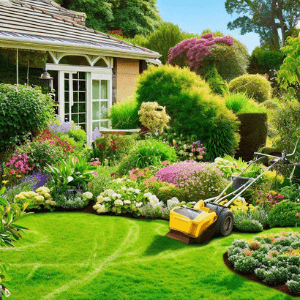
Proper pruning techniques, weed control, pest management, and fertilizing are vital to maintaining a low-maintenance garden. Pruning keeps plants healthy and manages their size.
Mulching is an excellent way to control weeds and retain moisture in the soil. Organic pest control methods include companion planting and beneficial insects. Fertilizing should be done sparingly and only when necessary.
Conclusion
Creating a low-maintenance garden is a great way to enjoy the beauty of nature without the added stress of maintenance. By following these simple steps, you can create a beautiful, sustainable, and low-maintenance garden that will provide years of enjoyment.
Choose the right plants, use efficient irrigation, and maintain your garden to keep it healthy and beautiful. If you need more help, there are many online and local gardening resources.
Landscaping can add beauty, value, and functionality to your property, but with so many services available, it can take time to know where to start. Whether you want to update your yard, create a new outdoor living space, or maintain your existing landscape, a landscaping service can meet your needs. In this blog post, we'll explore the different types of landscaping services available and their uses and benefits.
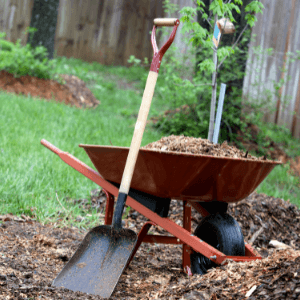
Design services are all about creating a vision for your outdoor space. This can involve creating a plan for new construction or renovations, choosing the right plants and materials, and determining the best use of space.
Design services can help you create a yard that reflects your style, enhances your property, and meets your needs. Whether you're looking for a simple makeover or a complete overhaul, design services can help you get the desired results.
Maintenance services are all about keeping your yard looking its best. This can involve mowing the lawn, watering, fertilizing, pruning, and mulching. Maintenance services can help you maintain the health of your plants and keep your yard neat. Whether you're looking for weekly or monthly maintenance or need help with specific tasks, maintenance services can help keep your yard looking fantastic.

Construction services are all about creating new structures and features for your yard. This can involve building retaining walls, patios, walkways, and other facilities. Construction services can help you create a functional and beautiful outdoor living space. Whether you're looking for a simple walkway or a full outdoor kitchen, construction services can help you bring your vision to life.
Various landscaping services are available, and the one that's best for you depends on your requirements and preferences. Whether you want to enhance your yard, create a new outdoor living space, or maintain your existing landscape, a landscaping service can meet your needs.
If you're ready to start your landscaping project, contact Landscaping St. Catharines. Our professional staff is here to help you choose the right services for an attractive, helpful, and environmentally friendly garden. Contact us today to schedule a consultation!
To make your outdoor living space the finest location to relax, have fun, and enjoy yourself, vary it with the seasons. To maximize your outside area, Ontario homeowners and business owners must construct a seasonal outdoor space.
This blog post will share some of our favourite seasonal outdoor space ideas to inspire your design.

Spring in Ontario is the perfect time to update your outdoor living space for fresh air and sunshine. Add some colourful flowers and greenery to your landscaping to create a vibrant and lively atmosphere.
Spring in Ontario is the perfect time to update your outdoor space for fresh air and sunshine. And remember to add some outdoor lighting, like string lights or lanterns, to create a comfortable atmosphere and keep you having fun well into the night.
Summer is the perfect time to enjoy the outdoors with friends and family. Start by adding a large deck or patio to your Ontario home or business to create a functional and inviting outdoor living space for the summer.
Set up an outdoor kitchen area with a grill and a mini-fridge to keep your drinks cool. Create a shaded area with umbrellas, a pergola, or an awning to protect you and your guests from the sun's rays.
Add a cozy seating area with comfortable furniture and colourful throw pillows. A fire pit or chiminea will provide warmth and a focal point for those cool summer evenings.

You might want to include cozy seating with soft blankets and cushions when making an outdoor living space for fall. You might wish to have comfortable seating with soft blankets and pillows when creating an outdoor space for fall.
Use warm colours and textures in your landscaping design, such as oranges, yellows, and deep reds. To keep warm on cool autumn evenings, add a fire pit or outdoor heater that adds both warmth and ambiance.
With these things, you can make a warm and comfortable place to enjoy the fall beauty in Ontario.
Winter doesn't have to mean the end of your outdoor space. With the right design, you can create a cozy and comfortable winter oasis in your Ontario home or business.
Add a hot tub or sauna to keep you warm and relaxed, and use warm outdoor lighting to make it feel like home. Boost your landscaping's holiday spirit by including some evergreens or other winter-friendly plants and decorations.
Don't let the cold weather keep you indoors—embrace the beauty of winter in your outdoor living space.
Conclusion
Creating a seasonal outdoor space is essential for any Ontario home or business. By changing your outdoor space based on the seasons, you can make the most of it and make it a nice place to relax, have fun, and enjoy yourself.

From colourful flowers and greenery in the spring to a hot tub or sauna in the winter, countless seasonal outdoor space ideas will inspire your design.
Whether you're establishing a secluded retreat or a welcoming space for guests, every Ontario property needs a seasonal outdoor space.
At Landscaping St. Catharines, we specialize in creating custom outdoor living spaces that are perfect for every season. Whether you want to establish an area to relax in or host events, our knowledgeable staff can assist you.
Contact us today to learn more about our services and to start creating the perfect seasonal outdoor living space for your Ontario property.
As homeowners and landscapers, it's our job to take care of the environment and encourage people to live in a way that doesn't hurt it. Sustainable landscaping is an essential part of this, and it's a great way to create a beautiful and functional outdoor space while minimizing our environmental impact. This article will talk about how important it is to have a sustainable landscape and give tips and ideas for designing and taking care of one.
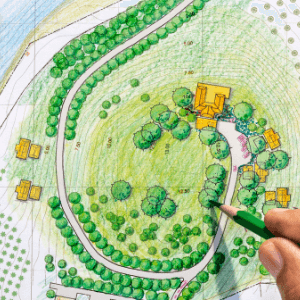
Sustainable landscaping creates a beautiful, functional outdoor place with minimal environmental impact. By using methods and materials that are good for the environment, we can save water, cut down on pollution, and protect natural resources. Sustainable landscaping can also reduce urban heat island effects, enhance air quality, and provide wildlife habitat.
When designing a sustainable landscape, starting with a plan is essential. The first step is to select the right plants for your climate and soil. By choosing plants that do well in your area, you can water less and use less pesticides and other chemicals. Also, if you use native and indigenous plants in your design, you'll be helping to protect biodiversity and support local wildlife.
Another critical aspect of designing a sustainable landscape is reducing maintenance and lawn care. This can be done with hardscaping and other landscaping features, like porous surfaces, which reduce the amount of lawn that needs to be cared for. Furthermore, xeriscaping and water-wise gardening techniques can help conserve water and reduce irrigation needs.

One of the best ways to create a sustainable landscape is to follow sustainable practices. One of the most important of these is composting. You can reduce landfill waste and increase soil health by composting yard waste. Reduce pesticide and chemical use in your landscape to protect the environment and promote plant health.
Another sustainable practice that can be implemented in landscaping is rainwater harvesting. Collecting and storing rainwater can reduce your reliance on municipal water and conserve resources. Additionally, mulch and other organic matter can improve soil health and reduce erosion.
Keeping a sustainable landscape in good shape takes ongoing work, but the benefits are worth it. One of the most important things to do is monitor and evaluate your sustainable practices' effectiveness. This will help you identify areas for improvement and adjust your strategy over time.
Common issues and problems, like pests or diseases, can be solved with organic pest management techniques and other environmentally friendly methods. Also, it's important to change and adapt your sustainable landscape over time, because different strategies may be needed as conditions change.

Conclusion
Sustainable landscaping is essential to protecting the environment and promoting sustainable living. By following the tips and strategies discussed in this article, you can create a beautiful and functional outdoor space that is also eco-friendly.
Choose low-maintenance plants that thrive in your climate and use sustainable practices like composting, rainwater collection, and organic pest management.
Finally, monitor and analyze your sustainable behaviors and alter your sustainable landscape over time.